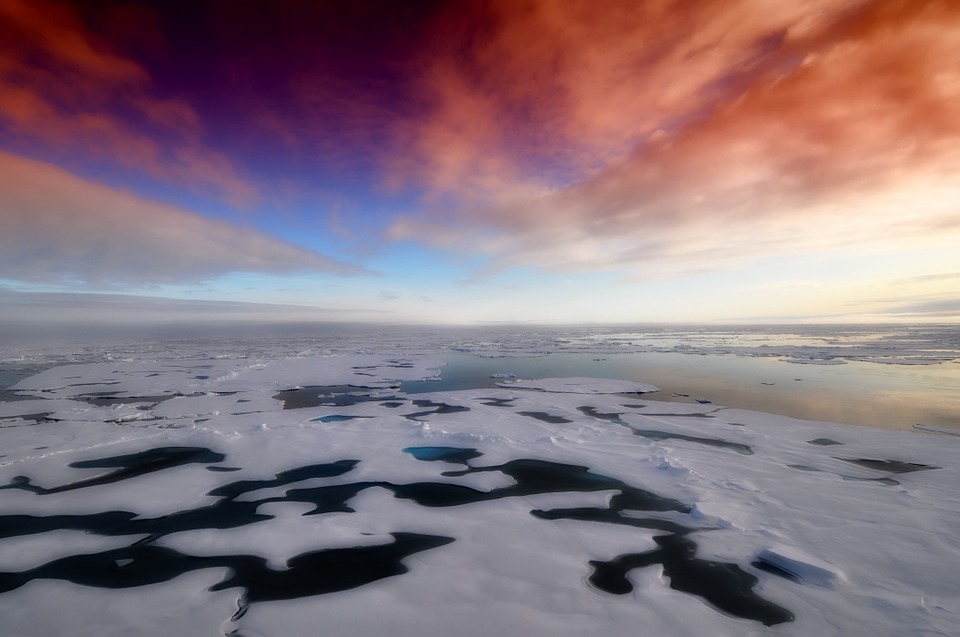There is still a lot to see when it comes to studying what lies in the polar region of Antarctica. A group of researchers discovered a magnetic anomaly hidden miles under the ice.
In the Amazon Prime series Forbidden Mysteries, a group of scientists found a magnetic anomaly covered under miles of ice in the arctic back in the 1990s. The group drilled into the ice and found a pristine body of water which is now known as Lake Vostok, found near Russia’s scientific research station in the eastern region. According to the series narrator David Taylor back in 2018, Russia had already suspected that they built their research base on top of a sub-glacial lake back in the 1970s.
Lake Vostok is the largest lake that has been discovered in the last century. It is the size of Lake Ontario, but with areas that go deeper, with a depth of more than 3,000 feet and quadruple the volume. The body of water, which is still surprisingly liquid and not frozen, could date as far back between 13,000 to 14 million years ago. The water has a temperature between 10 degrees to 18 degrees Celsius, which would mean that there is a subterranean heat source. Russian scientists have taken core samples and after further analysis, found the presence of microbes, nutrients, as well as gases such as methane. Summing up the findings, the researchers seemed to have discovered a whole ecosystem in Lake Vostok, hidden under the ice.
The ice in the Arctic region is slowly melting, further serving as a reminder of how real climate change is. Vice reports that US space agency NASA has released satellite images of Antarctica, showing the drastic melting of the ice caused by a brief heatwave from the 13th to the 15th of February. The temperature went up to 18.3 degrees celsius, the highest it has ever been.
The agency’s satellite photos saw the greening of Eagle island, a region in the icy continent. The heatwave removed about four inches of snow, and the agency believes that this particular heatwave was responsible for 20 percent of the region’s seasonal snow accumulation to melt.



 Tabletop particle accelerator could transform medicine and materials science
Tabletop particle accelerator could transform medicine and materials science  Trump and Merck KGaA Partner to Slash IVF Drug Costs and Expand Fertility Coverage
Trump and Merck KGaA Partner to Slash IVF Drug Costs and Expand Fertility Coverage  Kennedy Sets September Deadline to Uncover Autism Causes Amid Controversy
Kennedy Sets September Deadline to Uncover Autism Causes Amid Controversy  NASA Partners with Katalyst to Save Swift Observatory with Innovative Docking Mission
NASA Partners with Katalyst to Save Swift Observatory with Innovative Docking Mission  Trump Signs Executive Order to Boost AI Research in Childhood Cancer
Trump Signs Executive Order to Boost AI Research in Childhood Cancer  Trump Administration to Launch Autism Initiatives Targeting Acetaminophen Use and New Treatment Options
Trump Administration to Launch Autism Initiatives Targeting Acetaminophen Use and New Treatment Options  FDA Adds Fatal Risk Warning to J&J and Legend Biotech’s Carvykti Cancer Therapy
FDA Adds Fatal Risk Warning to J&J and Legend Biotech’s Carvykti Cancer Therapy  Astronomers have discovered another puzzling interstellar object − this third one is big, bright and fast
Astronomers have discovered another puzzling interstellar object − this third one is big, bright and fast  Lab-grown meat: you may find it icky, but it could drive forward medical research
Lab-grown meat: you may find it icky, but it could drive forward medical research  Neuren Pharmaceuticals Surges on U.S. Patent Win for Rare Disorder Drug
Neuren Pharmaceuticals Surges on U.S. Patent Win for Rare Disorder Drug  SpaceX’s Starship Completes 11th Test Flight, Paving Way for Moon and Mars Missions
SpaceX’s Starship Completes 11th Test Flight, Paving Way for Moon and Mars Missions  NASA Astronauts Wilmore and Williams Recover After Boeing Starliner Delay
NASA Astronauts Wilmore and Williams Recover After Boeing Starliner Delay  SpaceX Starship Explodes in Texas During Test, Citing Nitrogen Tank Failure
SpaceX Starship Explodes in Texas During Test, Citing Nitrogen Tank Failure  Neuralink Expands Brain Implant Trials with 12 Global Patients
Neuralink Expands Brain Implant Trials with 12 Global Patients 































